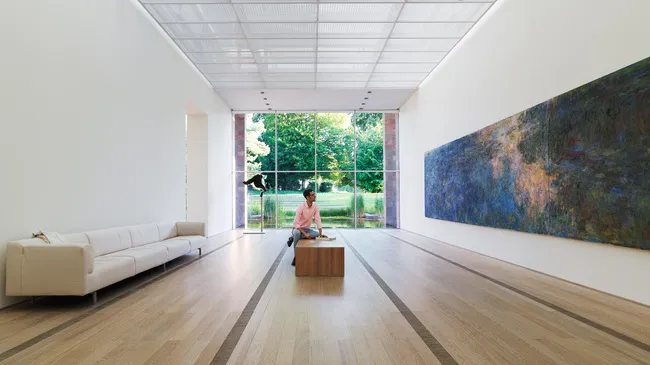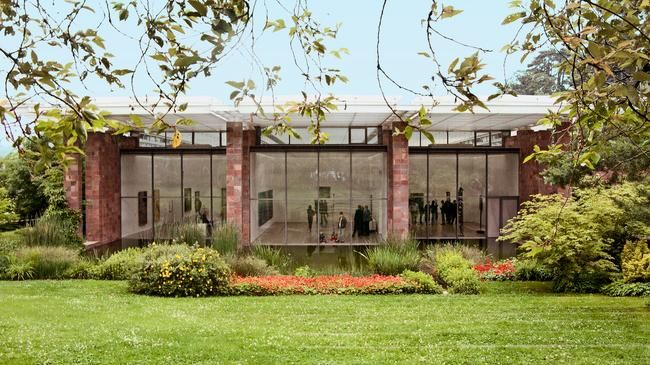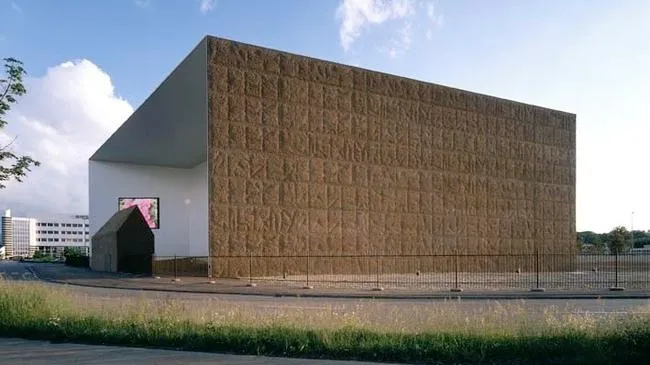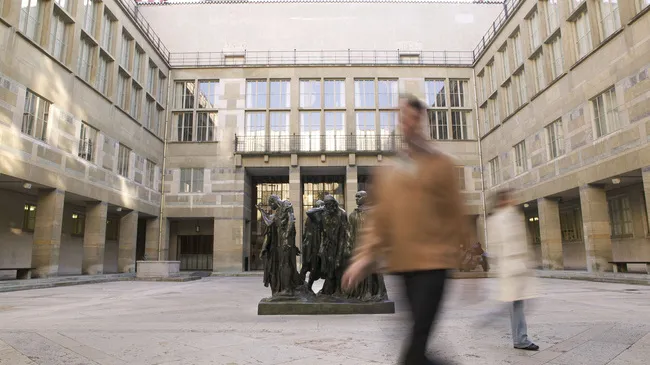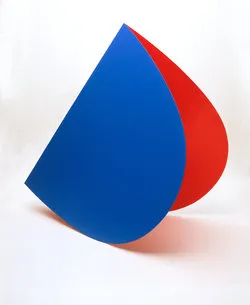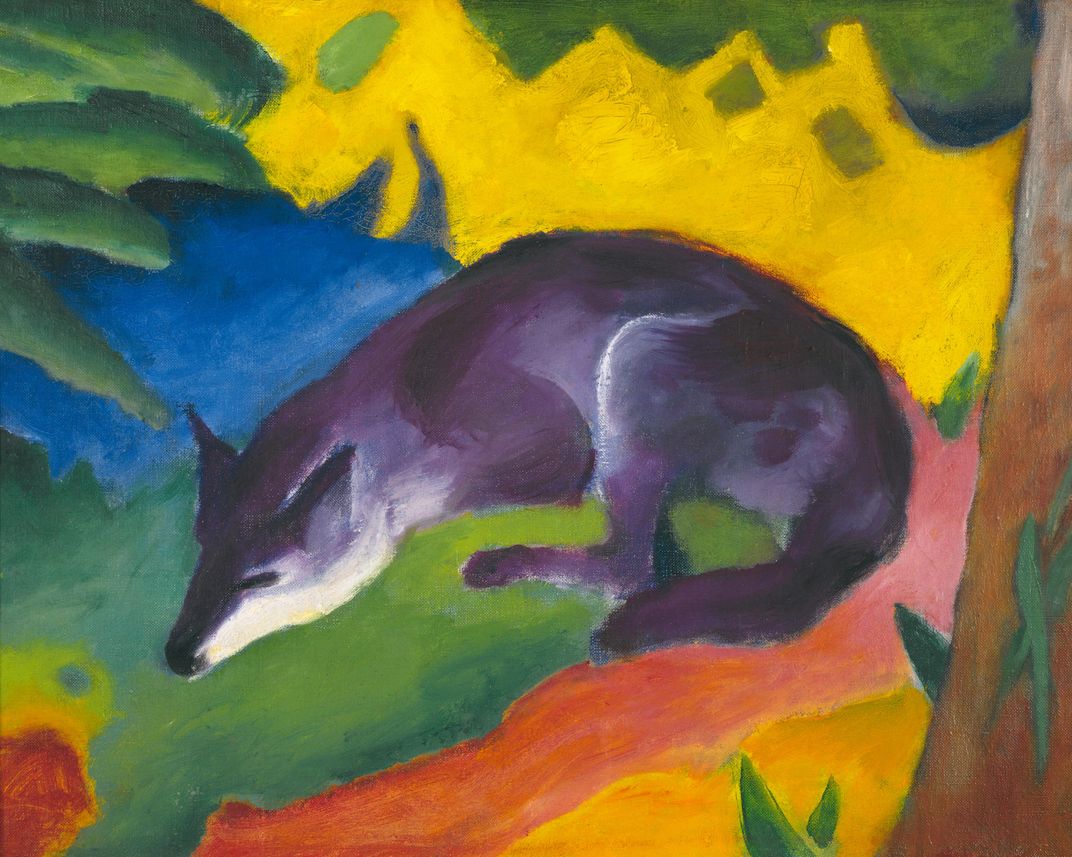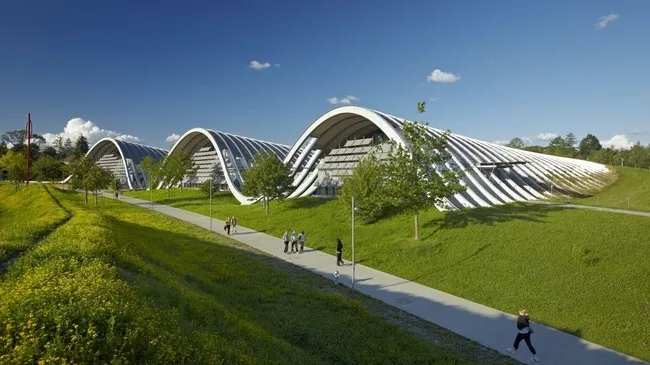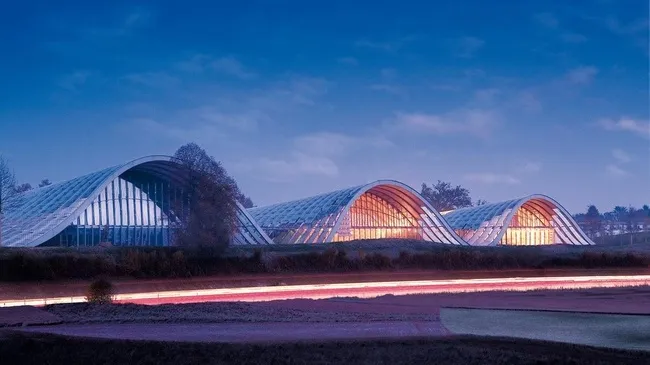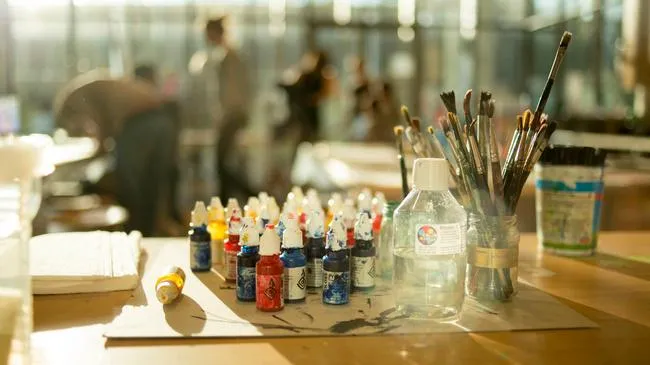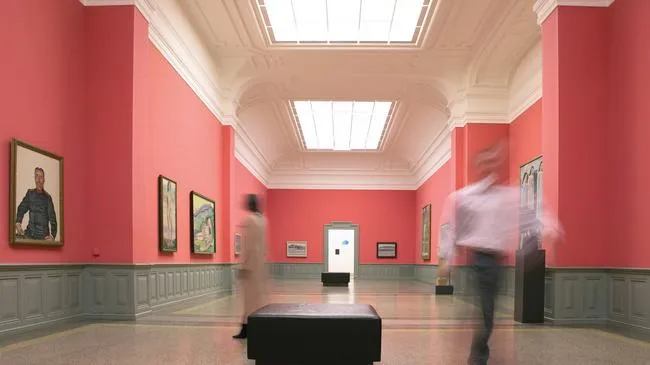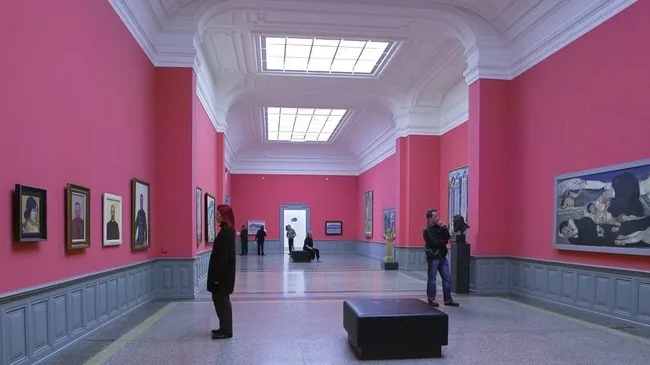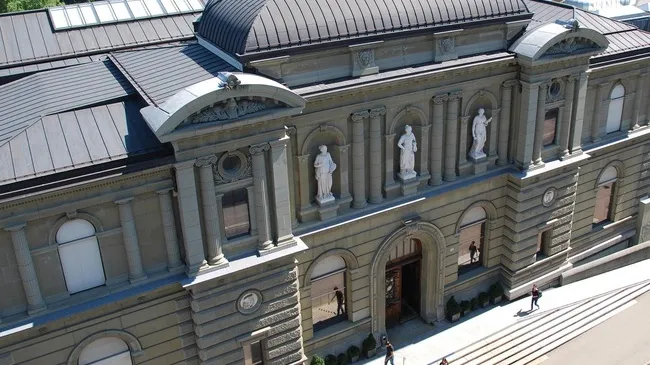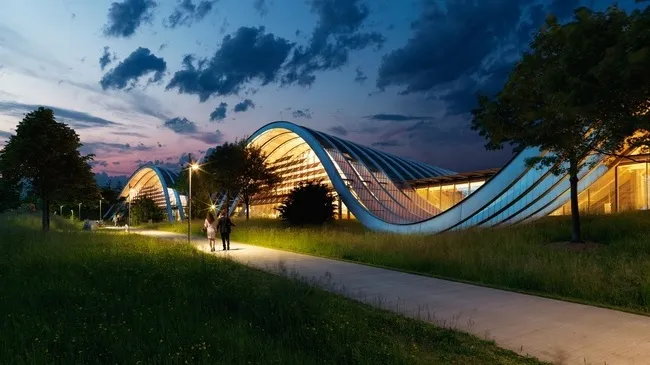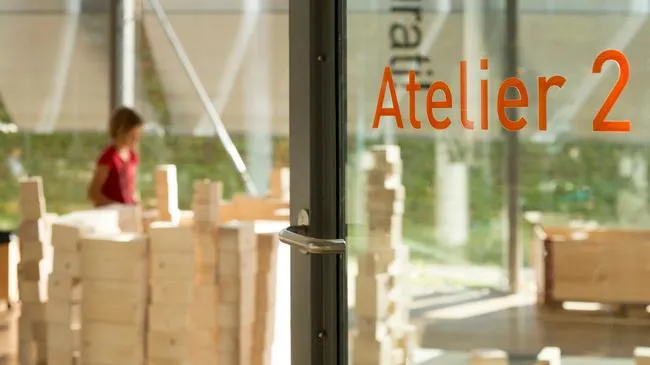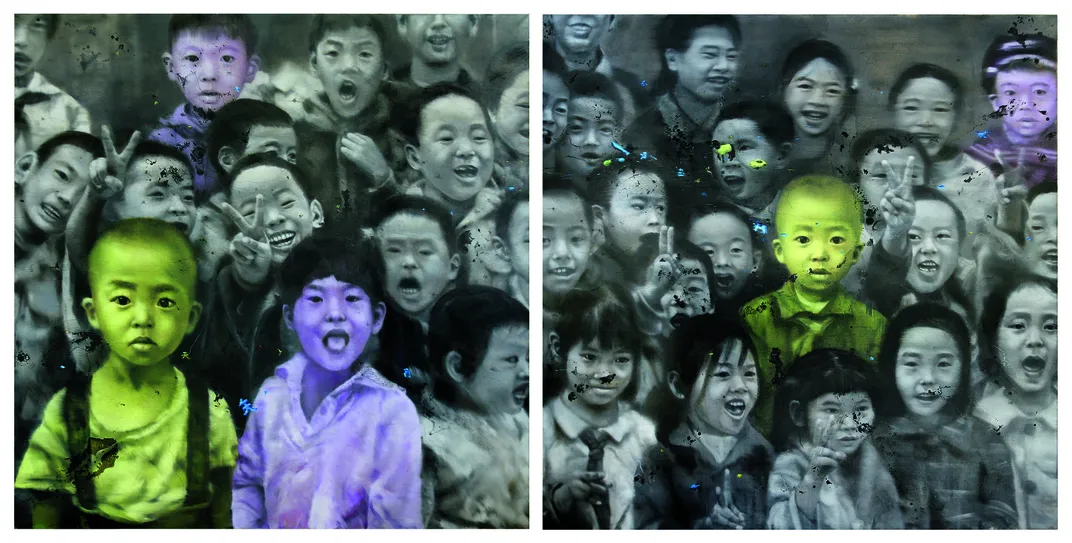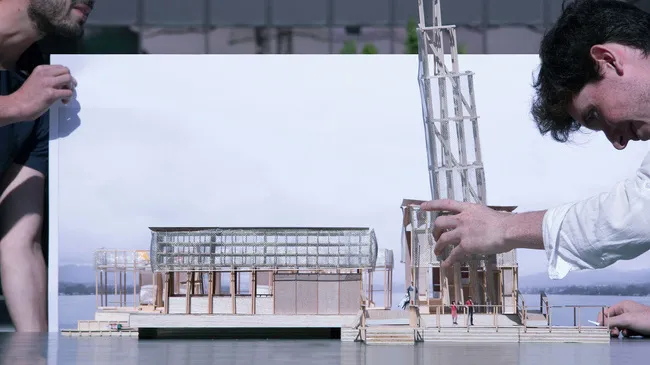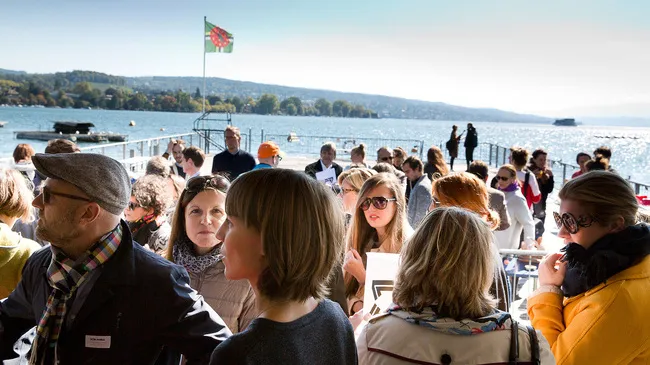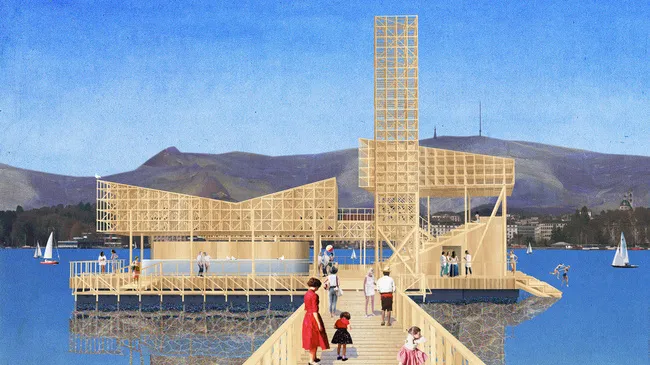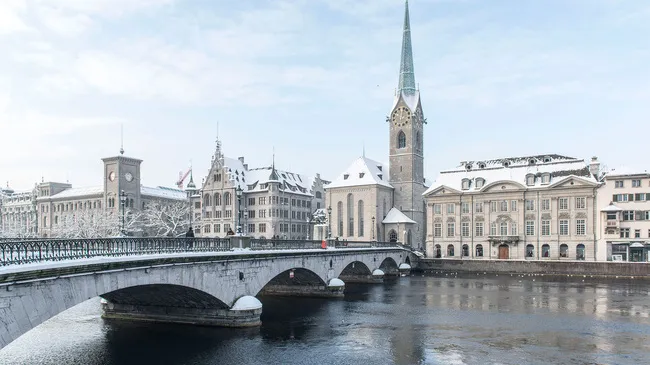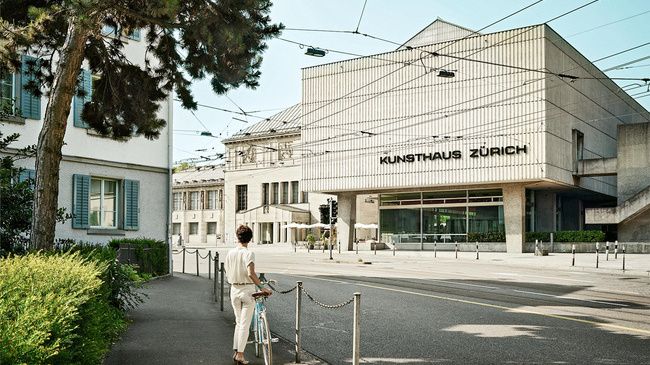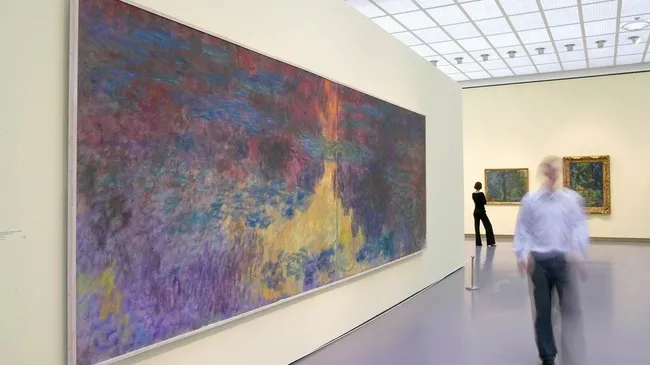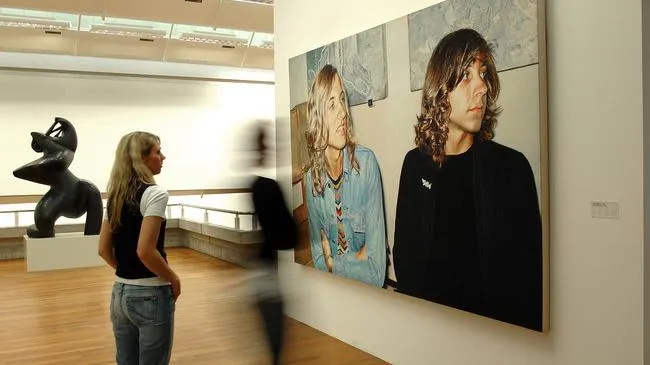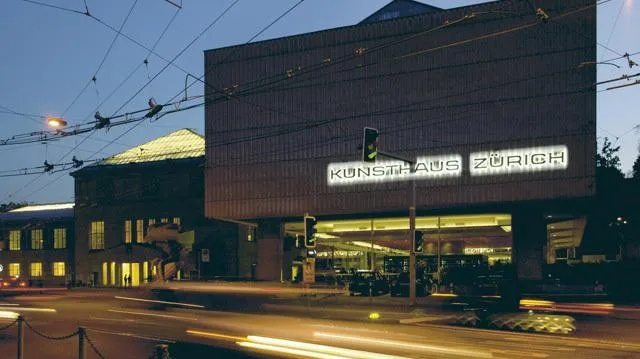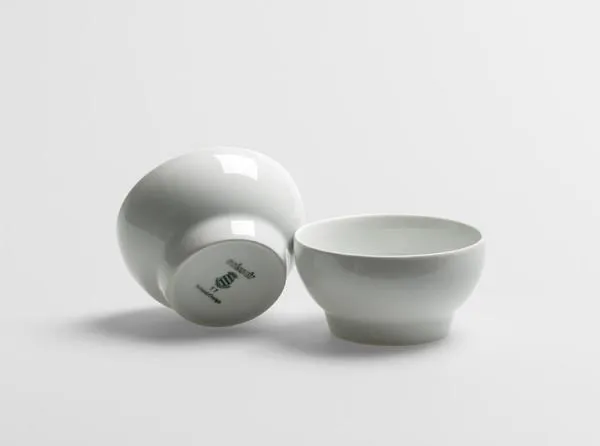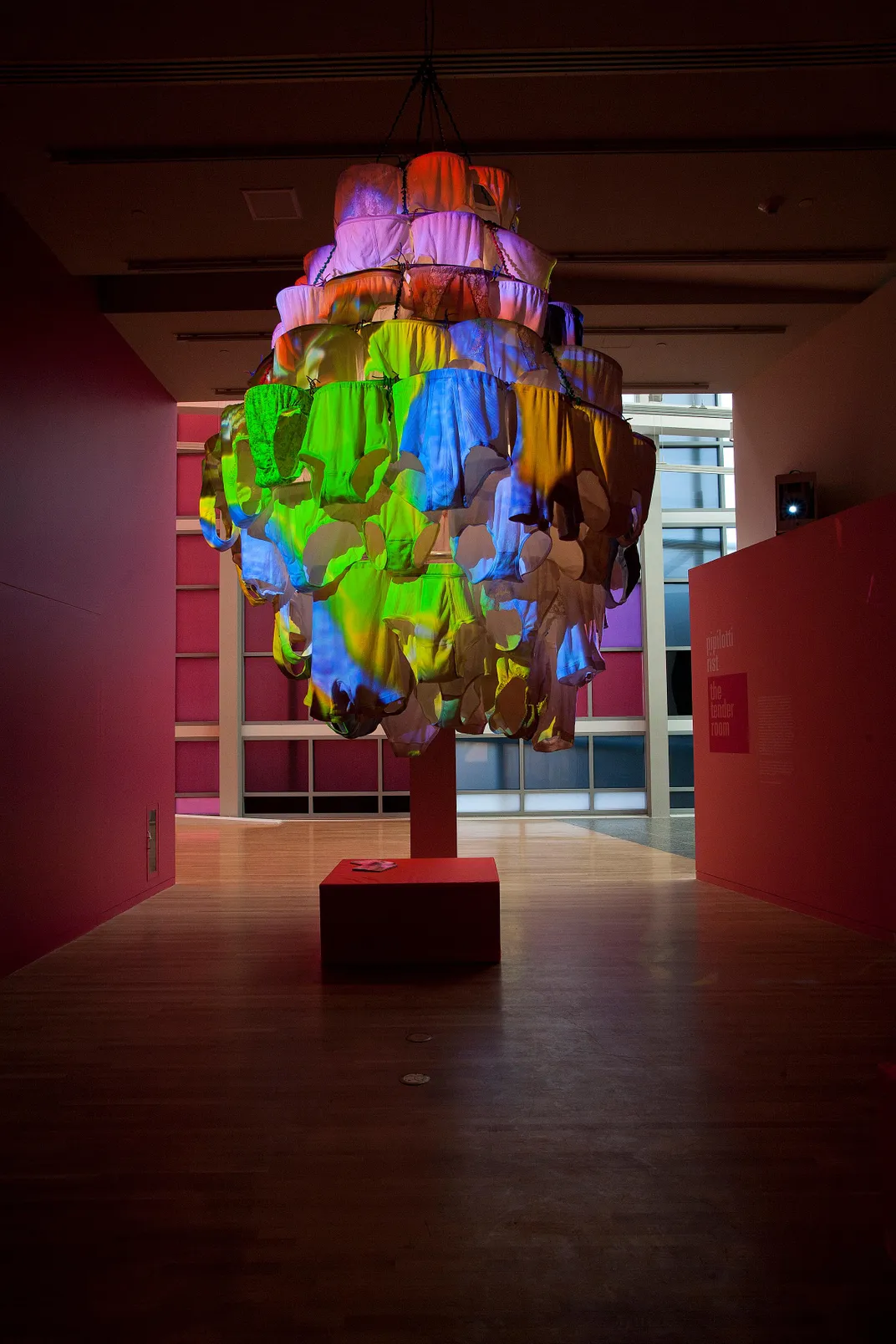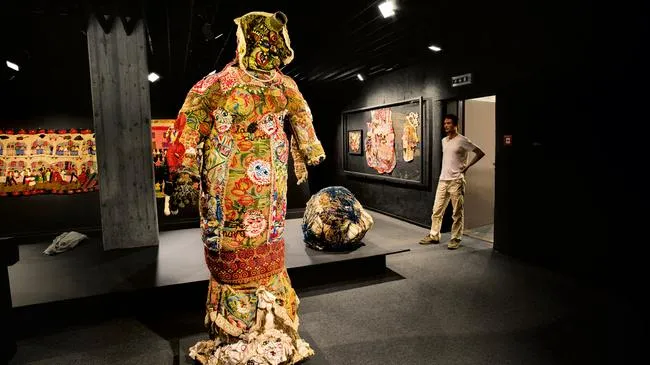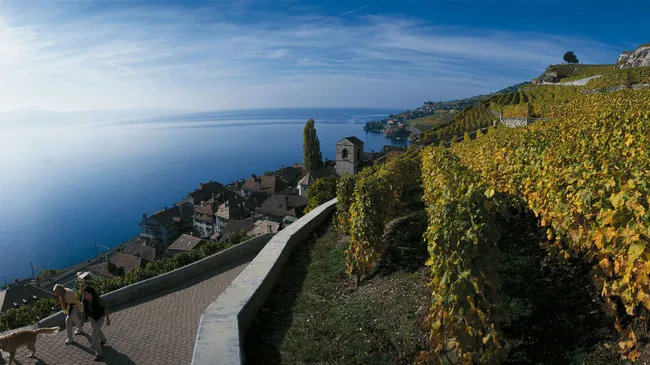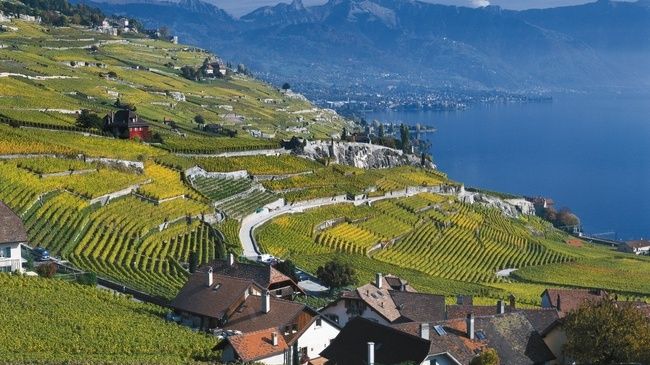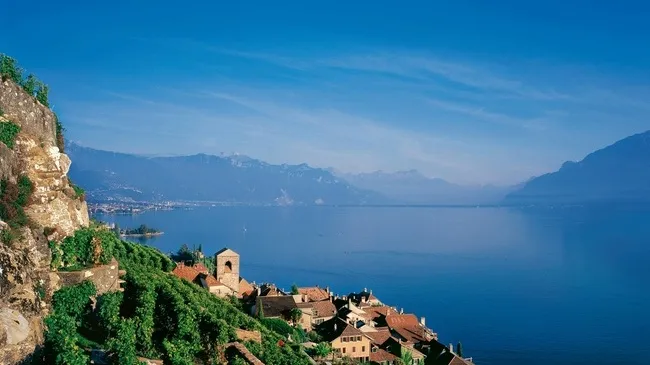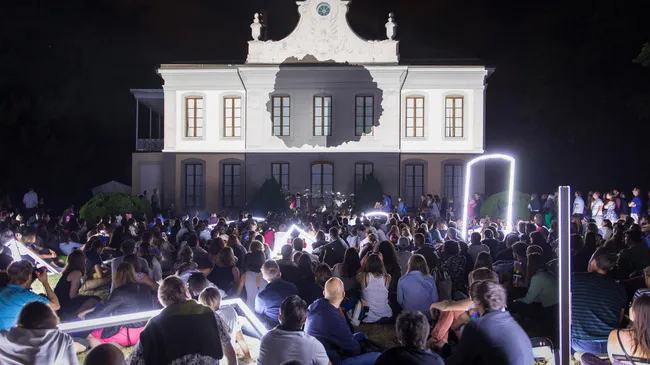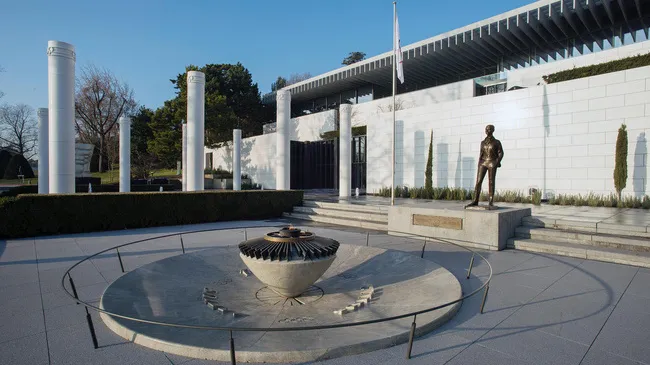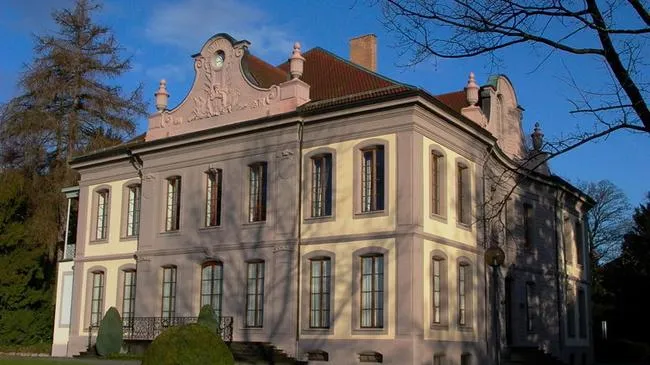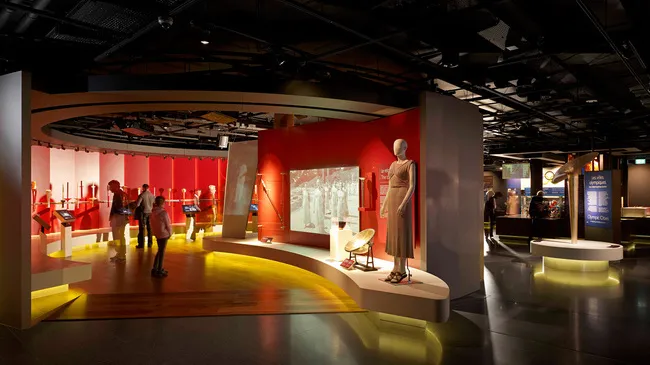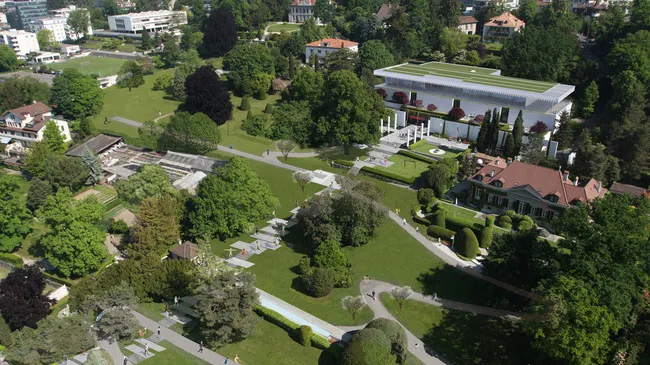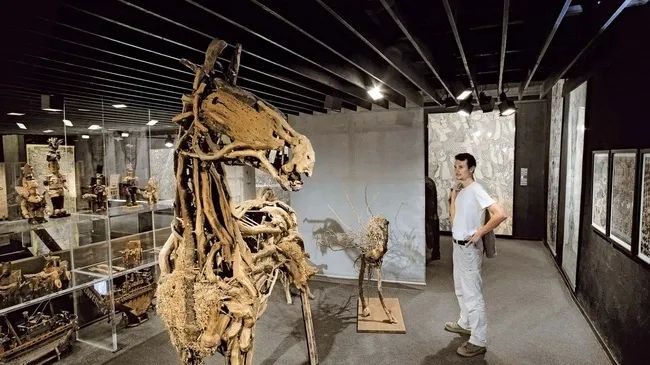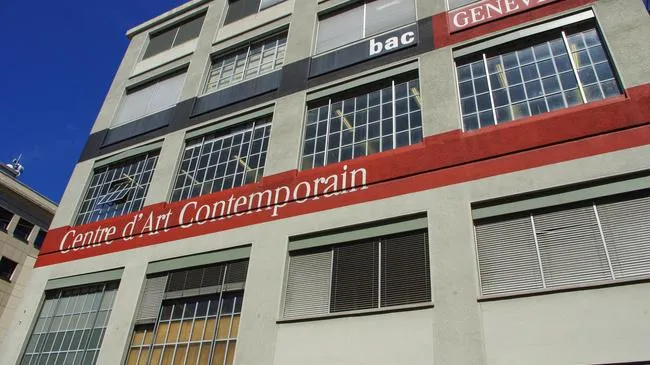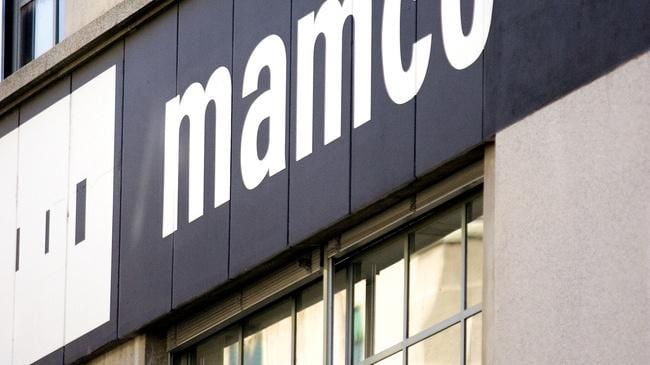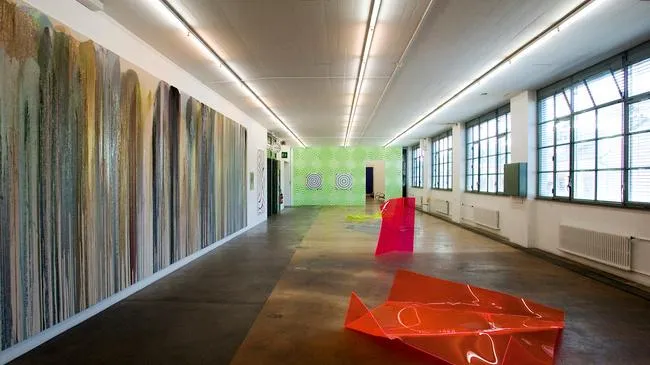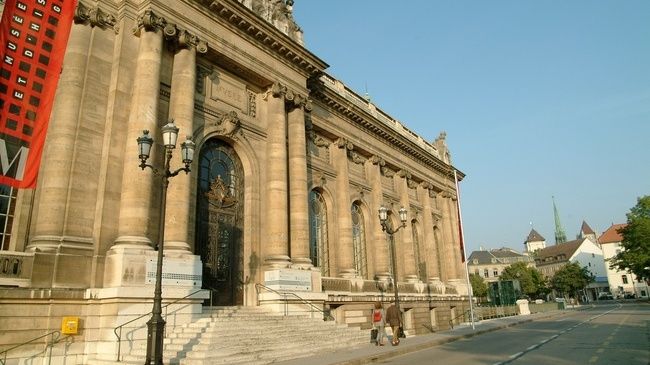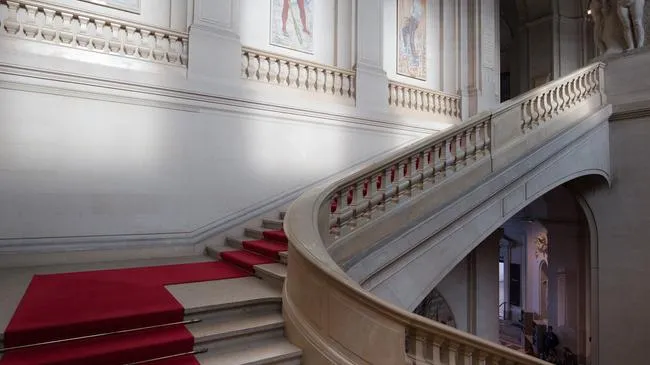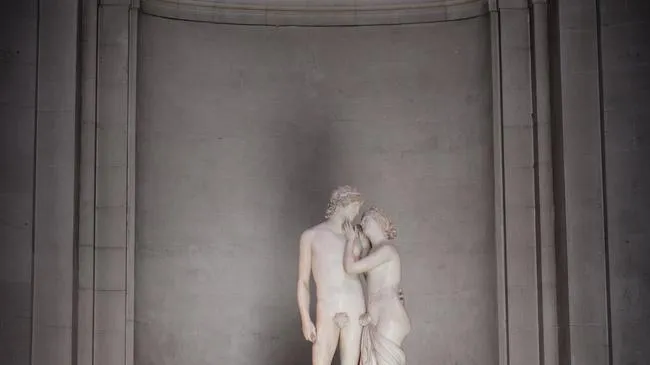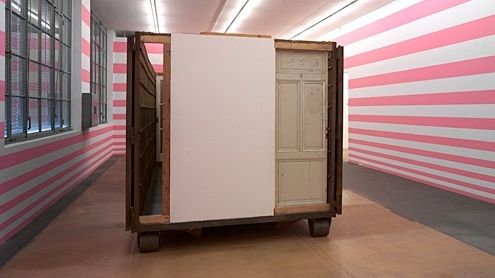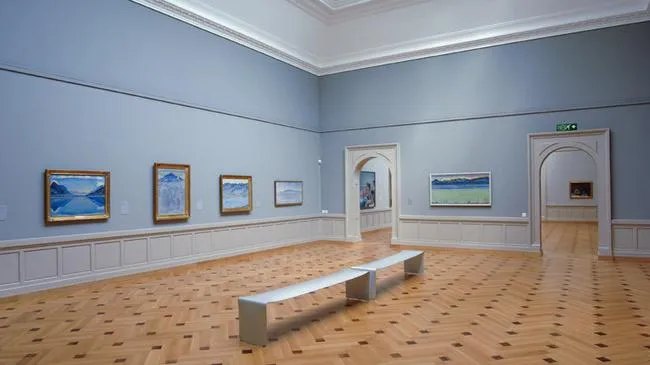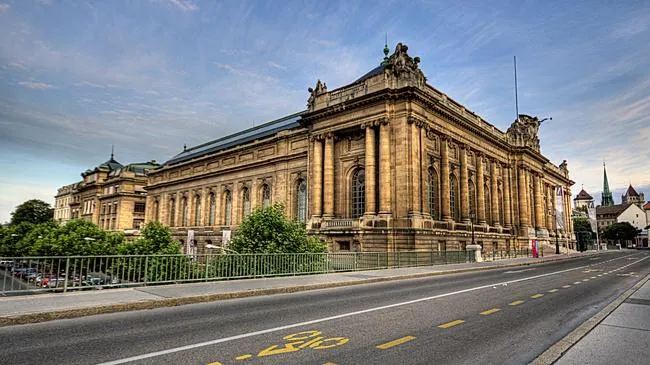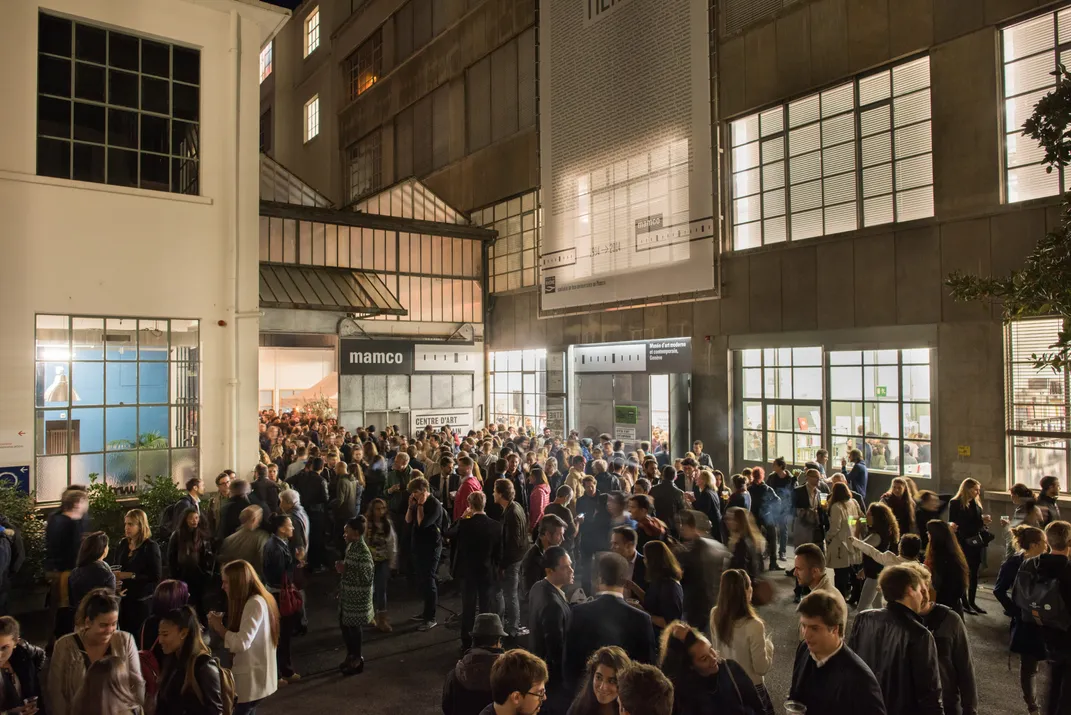If the snow-capped Alps and the stunning landscape of Switzerland aren’t enough of a draw for travelers, the country’s 900 plus museums and cultural institutions might tip the scales. History buffs and art-lovers, rejoice—that’s one museum per 7,500 inhabitants. From the northern border of the rushing Rhine River to the southern tip of Lake Geneva, Switzerland’s major cities offer a cultural extravaganza of information waiting to be explored by the eager-to-learn. From this summer’s highly-anticipated event, Art Basel, where thousands of art lovers will gather to Zürich’s Manifesta 11 Art Festival this June, 2016 will offer a remarkable number of new and exciting exhibitions. Anyone planning a trip this year should be sure to make accommodations around these upcoming events in the following five major cities.
1) Basel
Along the mighty waters of the Rhine River in Northern Switzerland, the city of Basel touts an artistic playground of over 40 museums within 15 square miles. The city’s rich art history unites a contrasting architectural landscape where buildings dating as far back as the 15th century stand proudly among the contemporary creations of international artists. Though it may be tough to visit all 40 museums, visitors should, at the very least, budget time for these three important stops: The Kunstmuseum Basel, the Foundation Beyeler and the Museum Tinguely.
The Kunstmuseum Basel, the largest publicly accessible art collection in Switzerland, houses the oldest public art collection in the world, and it’s about to get bigger. Its new extension building will open this April, allowing the recently-renovated original building and the new addition to simultaneously display pieces from the world’s first municipally-owned collection known as the the Amerbach Cabinet. Further highlights include masterpieces of classic modern art from Pablo Picasso to Gerhard Richter. The opening will be celebrated on April 17 and 18, 2016.
Three miles northeast of the Kunstmuseum, The Fondation Beyeler, Switzerland’s most-visited museum, welcomes 350,000 visitors every year to view rare works ranging from Monet’s “Water Lilies” to Cézanne’s “The Water Melon Still Life.” In the late 1960s, international art trader Ernst Beyeler founded the museum to house these works and over 34 Picassos. (Beyeler visited Picasso’s studio many times during his career and was personally awarded these works by the artist himself.) This September, the Fondation Beyeler will host the most awaited exhibition in 2016: “Kandinsky, Marc & Der Blaue Reiter” (September 4 through January 22, 2017), which will display examples from one of the most fascinating and brief periods in modern art: Der Blaue Reiter, which celebrated abstract forms and prismatic colors. For the first time since the early 20th century, a Swiss museum will showcase the work of revolutionary artists Vassily Kandinsky and Franz Marc. The presentation will highlight their most notable accomplishment: the Der Blaue Reiter Almanach (The Blue Rider Almanac), a collection of reproductions of more than 140 artworks, and 14 major articles within the movement.
The Tinguely Museum, located directly on the Rhine, showcases the world's largest collection of works by Jean Tinguely (1925-1991), one of Switzerland's most innovative and important modern artists. The museum features four decades of work, including many of the artist's sculptural machines, created in the Dada tradition, for which he is most famous.
For a different type of museum experience, the Schaulager, a unique exhibition space designed by the renowned architectural firm Herzog & de Meuron, offers a completely different way to experience art. Neither a conventional museum nor a traditional warehouse, the Schaulager is a art preservation lab and public viewing area for works from the Emanuel Hoffmann Foundation collection. Stop by to get a fascinating and rare look into parts of the art world that often live off view to the public.
June, however, is the best time to be in Basel for the city will once again become a meeting place for more than 90,000 visitors from around the globe for the highly-anticipated event Art Basel. From June 16 to 19, collectors, gallery owners, curators and artists will gather in a celebration of modern works by over 4,000 artists at the new Exhibition Center. Hailed by The New York Times as the "Olympics of Art," Art Basel has become a world-renowned, “annual family meeting” of the art scene.
2) Bern
Switzerland’s capital, Bern, lures visitors with its charming, historic UNESCO-labelled center and stunning views of the Aare River. The city, which dates back to the Middle Ages, is now home to two spectacular sights: the Zentrum Paul Klee, a world-class museum dedicated to the institution's namesake, one of Bern’s most prominent artists, and the Kunstmuseum Bern, which was opened in 1879 and is one of the oldest art museums in Switzerland. This February 19th to June 19th, both museums will stage the upcoming exhibit “Chinese Whispers,” which will display important works from legendary art trader Uli Sigg. Sigg, who served as the Swiss Ambassador to China in the mid-1990s, amassed a remarkable collection of over 2,200 pieces, one of the largest collections of Chinese art in the world. Visitors can discover China through the eyes of contemporary artists such as Ai Weiwei during the collection’s last hurrah in Europe. From 2019 forward, “Chinese Whispers” will make a permanent home in Hong Kong in the new M+ Museum for Visual Culture.
3) Zurich
As World War I raged across Europe, artists with a plan to challenge nationalism and the materialism of bourgeois culture gathered in the alleyways of Zürich to turn the art world upside down. Dadaism, as the movement became known, celebrates its 100th anniversary this year, and its home city, which boasts more than 50 museums, will celebrate with events held throughout the year.
In addition to the Dada celebrations, this summer, the renowned international biennial for contemporary art, the Manifesta 11 Art Festival, will take place on the Limmat River from June 11 to September 18, 2016. Visitors are invited to gather on a floating “Pavillion of Reflections” complete with an open-air cinema and public swimming pool to contemplate this year’s theme, "What People do for Money: Some Joint Ventures." In the spirit of creation, this breathtaking temporary art landmark will be constructed in cooperation with 30 architecture students from ETH Zürich. Over the course of the festival, participating artists will use the working life of the people of Zürich as inspiration to develop 35 new art pieces. The Manifesta was founded in Holland and has been taking place every other year at a different location in Europe since 1996.
The Kunsthaus Zürich, located just North of Lake Zürich, has been collecting video art continuously since 1979 and includes works from international and Swiss artists spanning from the medium’s origin to modern day. This February 26 to May 8, the museum will honor internationally-known video artist Pipilotti Rist. Known for her sensual and, at times, risqué video installations, Rist has challenged the topic of eroticism with grace and sophistication since the 1980s. This year’s exhibition will present key works ranging from her early years through today in one single installation—an exhibit definitely worth checking out. If you’re planning a trip this fall, Kunsthaus Zürich will also be honoring the fragile beauty of Alberto Giacometti’s sculptures with a special exhibition 50 years after his death. (October 28, 2016 to January 15, 2017).
Museums aside, the city itself is a work of art. The unmistakable blue spire of the sacred Fraumünster Church, for example, defines Zürich’s skyline and is free for anyone to experience. Though it’s a holy place (Emperor Ludwig founded a Benedictine convent on this site in 853), very few people actually come here to pray: most visit to witness the light pour through the five magnificent windows and the rosette created by the artist Marc Chagall in 1970. Pro tip: the early bird catches the worm at this site, as the church is most beautiful during the morning’s first light.
4) Lausanne
Head south to the rolling hills of Lausanne, to take in the overwhelming beauty of Lake Geneva cradled by the dramatic peaks of the Swiss Alps. After an afternoon of wine-tasting in the Lavaux Vineyards that stretch for more than eight miles along the lake, thirst-quenched travelers may delight in the collection of the city’s Olympic Museum, which houses the largest archive of the Olympic Games in the world. Alternatively, the Beaulieu Castle displays the exclusive “Collection de l’art Brut,” an impressive assemblage of 15,000 “outsider art” objects from the estate of French painter Jean Dubuffet. The term “Art Brut” according to Dubuffet who studied and collected the creations of psychiatric hospital patients and prison inmates, means "unspoilt, raw art" and refers to the rebellious nature of those who live on the fringe of society. A few hours witnessing this out-of-this-universe exhibit may bring new meaning to the phrase “living on the edge.”
A five-minute walk north of the Olympic Museum, travelers will encounter the Musée de l’Elysée which is dedicated to the art form of photography at its highest international level. Just as the quality of the works inside the Musée de l’Elysée exceed expectations, so does the view—from the late 18th century villa, visitors can feel the vastness of Lake Geneva while they wander the grounds of Europe’s first museum solely devoted to photography. Entrance is free every first Saturday of the month.
5) Geneva
Geneva, home of the U.N. and the Red Cross, is Switzerland's most cosmopolitan city and a cultural powerhouse. Nestled at the southern tip of Lake Geneva and surrounded by the Alps and Jura Mountains, the country’s second-most populated city is home to 40 museums, including the Geneva Art Museum (Musée d’Art et d’Histoire) and the Musée d’Art Modern et Contemporain (MAMCO). MAMCO, which includes a network of 14 galleries and cultural institutions, is the newest and the largest museum for contemporary art in Switzerland. Since its opening in 1994, MAMCO, which exists in a beautiful renovated factory building, has been keeping things interesting by designing new exhibitions three times a year with no division between permanent and temporary exhibitions. The collection encompasses 4,000 works presented in vast rooms with even larger windows, creating an intriguing industrial-feel.
South of the Rhone River, the Quartier des Bains region has become a platform for contemporary art in Switzerland. With more than ten galleries and five cultural institutions, the Quartier des Bains Association hosts events year-round celebrating the art world—the most popular of which is the “Nuit des Bains” street art festival, celebrated three nights a year. On the third Thursday of March, May and September, thousands of artists, collectors, journalists and students gather to discover and appreciate new art in a street party atmosphere.
Switzerland has truly become the meeting place for art-lovers and creatives across the globe. This should come as no surprise, as the Swiss art scene has successfully merged international talent with local history for hundreds of years. It’s the birthplace of Dadaism and Surrealism and has since offered a space for other burgeoning artistic movements in the modern world. For new visitors, the sheer volume of museums alone can be overwhelming. Truth be told, whether you’re planning a trip for a week or several months, you’ll only just scratch the surface of what Switzerland has to offer. But if there’s a year to start exploring the country’s artistic and mountainous landscape, it’s 2016.
/https://tf-cmsv2-smithsonianmag-media.s3.amazonaws.com/filer/a1/3f/a13f5256-3e80-4ffe-ae0a-da50b4c87c6a/switzerland-key-visual.jpg)
